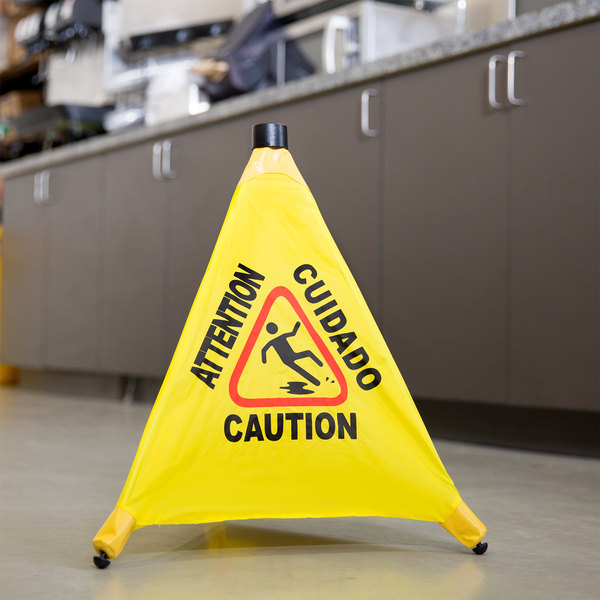 Horses are majestic animals but can be dangerous depending on the nature of the activities they are performing. The Equine Immunity Statute provides certain immunities to equine sponsors that own with horses that engage in certain equine activities. See La. R.S. 9:2795:3. “Participants” in equine activities cannot sue equine sponsors but mere “spectators” can, with limited exceptions. While the Equine Immunity Statute gives broad protections, the Fourth Circuit Court of Appeals recently found that a horse bite accident should proceed to a jury trial and not be settled as a matter of law by a trial judge. So, what are your legal steps after being bit by a horse in Louisiana?
Horses are majestic animals but can be dangerous depending on the nature of the activities they are performing. The Equine Immunity Statute provides certain immunities to equine sponsors that own with horses that engage in certain equine activities. See La. R.S. 9:2795:3. “Participants” in equine activities cannot sue equine sponsors but mere “spectators” can, with limited exceptions. While the Equine Immunity Statute gives broad protections, the Fourth Circuit Court of Appeals recently found that a horse bite accident should proceed to a jury trial and not be settled as a matter of law by a trial judge. So, what are your legal steps after being bit by a horse in Louisiana?
The plaintiff visited the defendant’s facility and inquired about feeding and visiting the defendant’s horses. The defendant owned several horses and provided educational opportunities to New Orleans residents who were interested in learning and interacting with horses. The defendant also provided boarding services for outside horse owners. On September 23, 2013, a few days after her first visit, plaintiff returned with carrots to feed the defendant’s horses. While the main office was closed that day, she encountered two outside horse owners who told her that a “pony” had been known to have bitten a child recently. Plaintiff went to the boarding area and fed three of the defendant’s horses. While she was feeding the third horse, she was bit on her hand.
The appellate court reversed the trial court’s holding that the defendant was entitled to immunity as a matter of law. The court held that the trial court applied an overly broad definition and interpretation of “participant.” Determining whether someone qualified as a participant must be done by a jury, or trier of fact. Statutes that provide immunity must be strictly construed against the party claiming said immunity. See Medine v. Geico Gen. Ins. Inc., 748 So.2d 532, 535 (La. App. Ct. 1999).
 Louisiana Personal Injury Lawyer Blog
Louisiana Personal Injury Lawyer Blog


 Lease agreements are important documents that specify the rights and obligations of both lessor and lessee. Specifically, termination of leases must follow specified procedures and the tenant must be given adequate notice before leases can be terminated. That being said, does a letter from the lessor to the lessee constitute proper notice for termination of a lease? The Fourth District Court of Appeals of Louisiana recently held that a tenant was not given proper notice for termination of his lease and therefore, the termination was not valid.
Lease agreements are important documents that specify the rights and obligations of both lessor and lessee. Specifically, termination of leases must follow specified procedures and the tenant must be given adequate notice before leases can be terminated. That being said, does a letter from the lessor to the lessee constitute proper notice for termination of a lease? The Fourth District Court of Appeals of Louisiana recently held that a tenant was not given proper notice for termination of his lease and therefore, the termination was not valid.  Every business which opens its doors to the public owes a duty of care to their patrons, a duty to make sure the patron is safe and free from harm. Often, this is as simple as keeping walkways clear and ensuring spills and other hazards are cleaned up in a timely fashion. But what most businesses have never contemplated is a possibility that the duty of care would be owed to something other than a real, live, breathing person. Could the persons to which a merchant owes a duty of care include “juridical” personhood, such as a corporation or a limited liability company (L.L.C.)? In this instance, the answer was, “no.”
Every business which opens its doors to the public owes a duty of care to their patrons, a duty to make sure the patron is safe and free from harm. Often, this is as simple as keeping walkways clear and ensuring spills and other hazards are cleaned up in a timely fashion. But what most businesses have never contemplated is a possibility that the duty of care would be owed to something other than a real, live, breathing person. Could the persons to which a merchant owes a duty of care include “juridical” personhood, such as a corporation or a limited liability company (L.L.C.)? In this instance, the answer was, “no.”  Trials are decided solely upon the evidence presented. A judge cannot read a book on the subject, or do extraneous research on the internet, to aid her decision-making process. In this case, the Defendant claimed that the judge did just that, by calling a city official to confirm some data. The appellate court thought otherwise. So, what do you do when you feel as if the Judge made a decision unfairly?
Trials are decided solely upon the evidence presented. A judge cannot read a book on the subject, or do extraneous research on the internet, to aid her decision-making process. In this case, the Defendant claimed that the judge did just that, by calling a city official to confirm some data. The appellate court thought otherwise. So, what do you do when you feel as if the Judge made a decision unfairly? In the Parish of Plaquemines in Louisiana, the oyster business can be quite profitable. Anywhere in the state, land can be a method of maintaining a person’s livelihood, whether it be through oil, tourism, or even an oyster lease. When a person with valuable land passes away, especially if that person is your relative, you may be curious as to how the death will affect claims to the land and its profits. One family found out when the courts were forced to interpret the law of community property as it relates to oyster leases.
In the Parish of Plaquemines in Louisiana, the oyster business can be quite profitable. Anywhere in the state, land can be a method of maintaining a person’s livelihood, whether it be through oil, tourism, or even an oyster lease. When a person with valuable land passes away, especially if that person is your relative, you may be curious as to how the death will affect claims to the land and its profits. One family found out when the courts were forced to interpret the law of community property as it relates to oyster leases.  When someone is injured on the job, sorting out liability can be complex. It can be doubly so when a prisoner is temporarily released so he or she can work and is subsequently injured on a job that was approved by the prison system and the sheriff managing that prison, but completely run by a private party. In such a situation, it will take an excellent lawyer to sort out the liability issues and advise whether a lawsuit is worth bringing. So, who is liable for injuries on a work release program?
When someone is injured on the job, sorting out liability can be complex. It can be doubly so when a prisoner is temporarily released so he or she can work and is subsequently injured on a job that was approved by the prison system and the sheriff managing that prison, but completely run by a private party. In such a situation, it will take an excellent lawyer to sort out the liability issues and advise whether a lawsuit is worth bringing. So, who is liable for injuries on a work release program? A wrongful death action lawsuit can be difficult for an individual to have to deal with. But what happens when a clerk that stamps the lawsuit stamps a date that does not exist? What do you do when the Clerk makes this error? The Third Circuit Court of Appeal for Louisiana recently addressed the issue.
A wrongful death action lawsuit can be difficult for an individual to have to deal with. But what happens when a clerk that stamps the lawsuit stamps a date that does not exist? What do you do when the Clerk makes this error? The Third Circuit Court of Appeal for Louisiana recently addressed the issue.  The death of a loved one is always a traumatic experience for family and friends, especially if the death could have been prevented or is at the fault of the hospital. When someone feels as if medical malpractice has occurred, Louisiana has strict guidelines regarding filing a medical malpractice lawsuit and someone unfamiliar with the legal process can easily be confused or frustrated by this complex process. For example, in Louisiana you have one year following a death to file a medical malpractice suit, however, is that filing due at by the close of business at the one year or is the filing due by midnight? The Louisiana Supreme Court recently consolidated two cases that answered such questions on when you have to file a medical malpractice lawsuit.
The death of a loved one is always a traumatic experience for family and friends, especially if the death could have been prevented or is at the fault of the hospital. When someone feels as if medical malpractice has occurred, Louisiana has strict guidelines regarding filing a medical malpractice lawsuit and someone unfamiliar with the legal process can easily be confused or frustrated by this complex process. For example, in Louisiana you have one year following a death to file a medical malpractice suit, however, is that filing due at by the close of business at the one year or is the filing due by midnight? The Louisiana Supreme Court recently consolidated two cases that answered such questions on when you have to file a medical malpractice lawsuit.  When you go to work each morning, the last thing you want to think about is: “What happens if I get hurt?” Unfortunately for many, workplace accidents are a real concern. The following case shows just how real, and complicated, workplace injuries can be.
When you go to work each morning, the last thing you want to think about is: “What happens if I get hurt?” Unfortunately for many, workplace accidents are a real concern. The following case shows just how real, and complicated, workplace injuries can be.